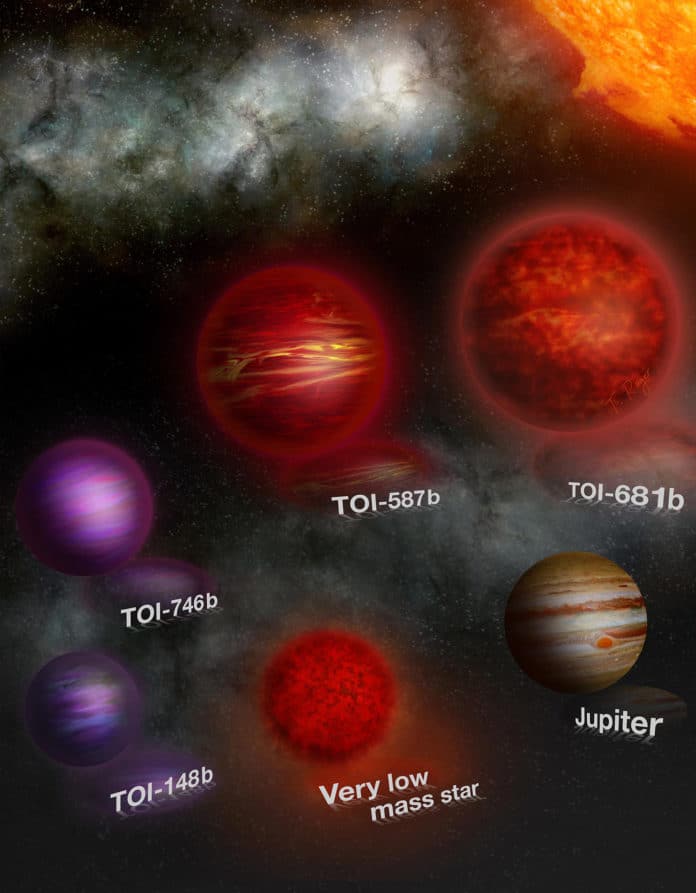Brown dwarfs are objects with a mass that range between the heaviest gas planets and the lightest stars. But, to what extent their mass lie remains elusive, especially their constitution is very similar to that of low-mass stars.
These limits vary depending on the chemical composition of the brown dwarf, for example, or the way it formed, as well as its initial radius. So, how to know whether the object is a brown dwarf or any other low mass star. To get a better idea, scientists need to study examples in detail.
But, brown dwarfs are very rare. Until now, scientists have accurately characterized about 30 brown dwarfs.
An international team, led by scientists from the University of Geneva (UNIGE) and the Swiss National Centre of Competence in Research (NCCR) PlanetS, in collaboration with the University of Bern, has identified five objects with masses near the border separating stars and brown dwarfs. The brown dwarfs, identified with the Transiting Exoplanet Survey Satellite (TESS), are dubbed (TOI) – TOI-148, TOI-587, TOI-681, TOI-746, and TOI-1213.
Identifying these objects could help scientists understand the nature of mysterious brown dwarfs.
The team called the objects ‘companion’ because they orbit their host stars with orbital periods of 5 to 27 days. The objects have radii between 0.81 and 1.66 times that of Jupiter and 77 and 98 times more massive. This places them on the borderline between brown dwarfs and stars.
Monika Lendl, a researcher in the Department of Astronomy at the UNIGE and a member of the NCCR PlanetS, said, “These five new objects, therefore, contain valuable information. Each discovery reveals additional clues about the nature of brown dwarfs and gives us a better understanding of how they form and why they are so rare.”
François Bouchy, professor at UNIGE and member of the NCCR PlanetS, said, “One of the clues the scientists found to show these objects are brown dwarfs is the relationship between their size and age. Brown dwarfs are supposed to shrink over time as they burn up their deuterium reserves and cool down. Here we found that the two oldest objects, TOI 148 and 746, have a smaller radius, while the two younger companions have larger radii.”
Nolan Grieves, a researcher in the Department of Astronomy at the UNIGE’s Faculty of Science, a member of the NCCR PlanetS, said, “Yet these objects are so close to the limit that they could just as easily be very low-mass stars, and astronomers are still unsure whether they are brown dwarfs. Even with these additional objects, we still lack the numbers to draw definitive conclusions about the differences between brown dwarfs and low-mass stars. Further studies are needed to find out more.”
Journal Reference:
- Nolan Grieves et al., Populating the brown dwarf and stellar boundary: Five stars with transiting companions near the hydrogen-burning mass limit, Astronomy & Astrophysics (2021). DOI: 10.1051/0004-6361/202141145
